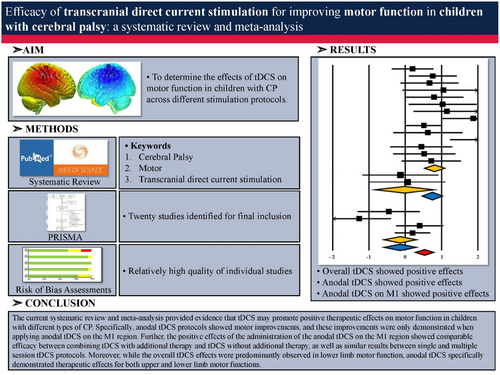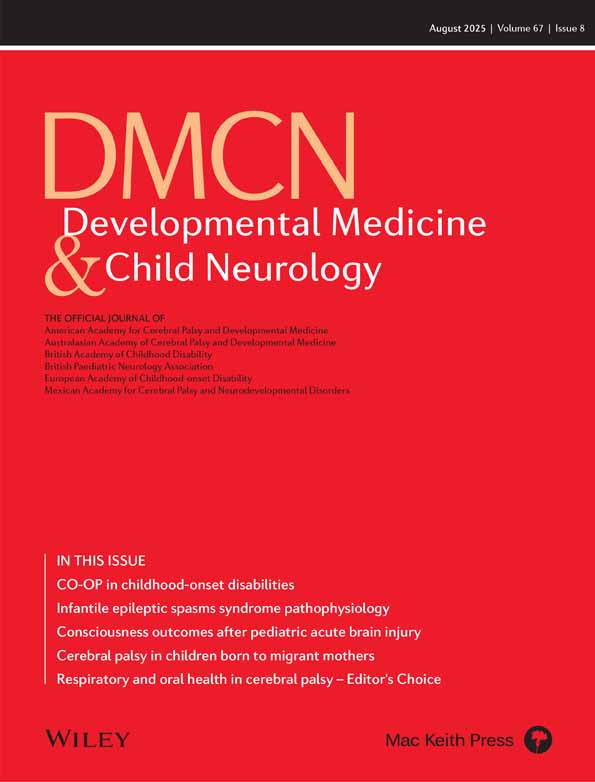Transcranial direct current stimulation and motor function in children with cerebral palsy: A systematic review and meta-analysis
The systematic review and meta-analysis investigated the effects of a form of therapeutic and non-invasive brain stimulation technique, known as transcranial direct current stimulation (tDCS), on motor function in children with cerebral palsy (CP). Twenty studies were included. Overall findings suggest tDCS may be a helpful additive to movement therapies for improving motor function in children with CP.
We focused on the effects of two types of tDCS stimulation: anodal and cathodal. Typically, anodal tDCS increases excitability of brain areas, whereas cathodal tDCS decreases it. We found that delivering anodal tDCS to the primary motor cortex (M1) may enhance motor recovery. The M1 is a brain area primarily responsible for control of movement. We also explored the effects of anodal tDCS on M1 under different study conditions. For example, we compared the effects of tDCS applied alone versus combined with other therapies. Results showed that tDCS combined with other therapies was more effective than when used alone.
Finally, in our analysis exploring potential differences in tDCS effects between lower and upper limbs, we found that overall tDCS showed motor improvements primarily in lower limb outcomes. That is, when examining the general effects of tDCS, or without regard to the polarity and stimulation site, the lower limbs consistently demonstrated improvements. However, when focusing specifically on anodal tDCS applied to M1, we observed improvements in both lower and upper limbs. These results highlight the importance of careful design when conducting tDCS studies and interpreting their outcomes.





